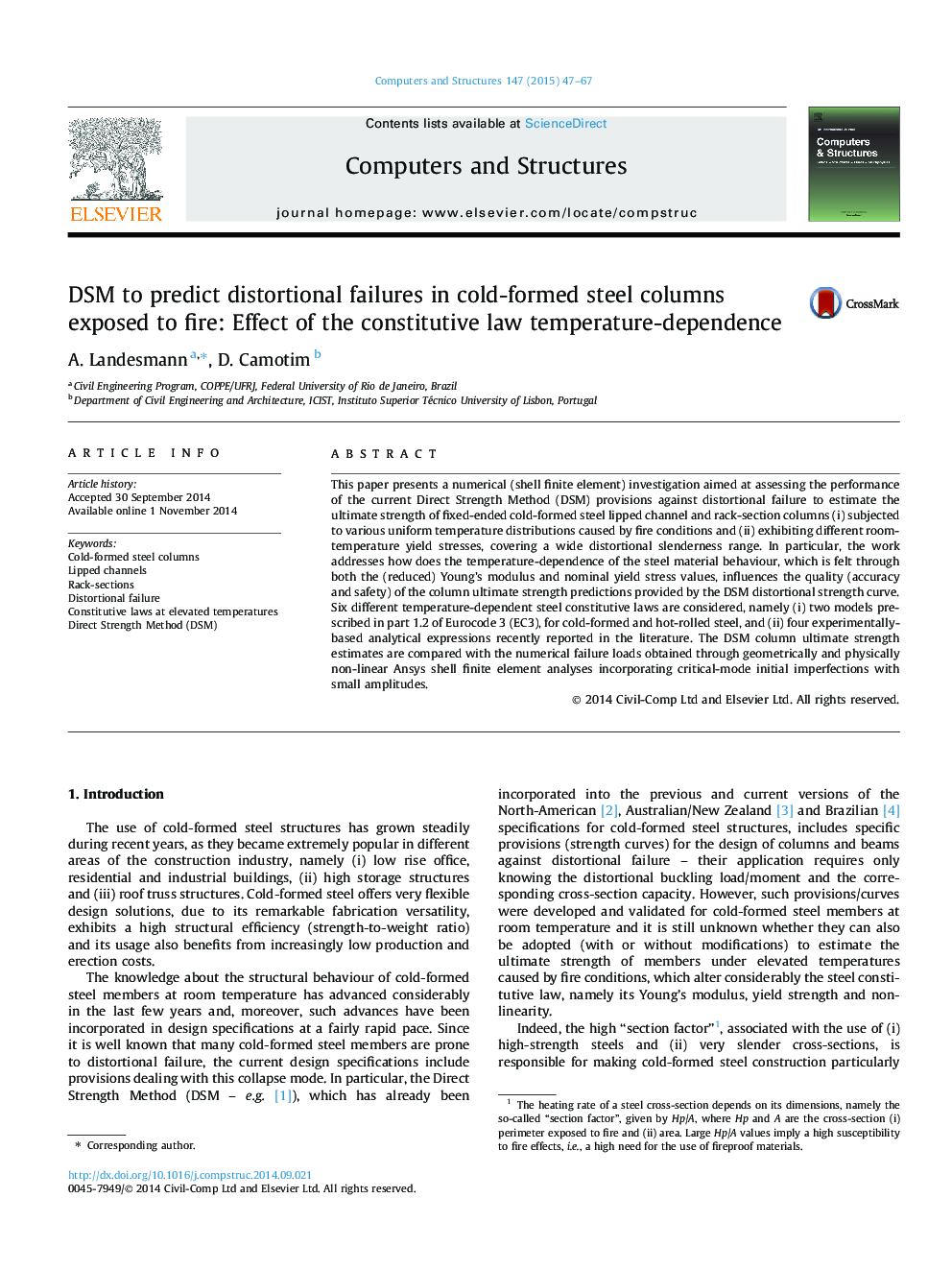| Article ID | Journal | Published Year | Pages | File Type |
|---|---|---|---|---|
| 6924565 | Computers & Structures | 2015 | 21 Pages |
Abstract
This paper presents a numerical (shell finite element) investigation aimed at assessing the performance of the current Direct Strength Method (DSM) provisions against distortional failure to estimate the ultimate strength of fixed-ended cold-formed steel lipped channel and rack-section columns (i) subjected to various uniform temperature distributions caused by fire conditions and (ii) exhibiting different room-temperature yield stresses, covering a wide distortional slenderness range. In particular, the work addresses how does the temperature-dependence of the steel material behaviour, which is felt through both the (reduced) Young's modulus and nominal yield stress values, influences the quality (accuracy and safety) of the column ultimate strength predictions provided by the DSM distortional strength curve. Six different temperature-dependent steel constitutive laws are considered, namely (i) two models prescribed in part 1.2 of Eurocode 3 (EC3), for cold-formed and hot-rolled steel, and (ii) four experimentally-based analytical expressions recently reported in the literature. The DSM column ultimate strength estimates are compared with the numerical failure loads obtained through geometrically and physically non-linear Ansys shell finite element analyses incorporating critical-mode initial imperfections with small amplitudes.
Related Topics
Physical Sciences and Engineering
Computer Science
Computer Science Applications
Authors
A. Landesmann, D. Camotim,
